What Does Heroin Look Like?
Heroin can appear as a white or off-white powder, similar to powdered sugar or flour, or it may be found as a brown powder. Another variant is black tar heroin, a sticky, dark substance resembling roofing tar or thick molasses. The color, texture, and consistency of heroin depend on its purity, additives, and manufacturing process. Moreover, the appearance of heroin can be altered by adding cutting agents, making it difficult to determine its purity or potency just by visual inspection.
The extremes of black and white are heroins’ stereotypically coming from Southeast Asia and Mexico, respectively. Brown heroin can come from any source but typically comes from Southwest Asia. Physically, most of the global’s heroin is in powdered form. The only exception is the solid form of heroin from Mexico known as “black tar heroin.”
What Does Pure Heroin Look Like?
Pure heroin refers to unadulterated heroin without any additives or cutting agents. It is rare to find pure heroin as it is often diluted or mixed with other substances. It is highly refined and has a powdery texture similar to powdered sugar.
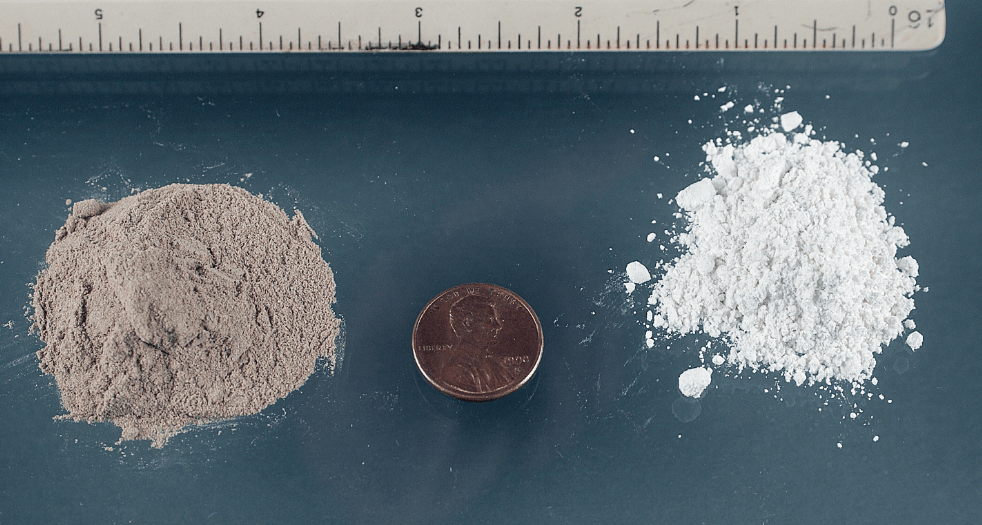
Pure heroin is pharmaceutical-grade heroin, a rare drug not commonly found on the illicit market. However, it’s crucial to emphasize that the term “pure” when referring to heroin should not be interpreted as a safer or less harmful form of the drug.
Types of Heroin
Heroin is a highly addictive drug regardless of its appearance. The physical appearance of heroin can vary, and it is crucial to recognize that the danger lies not in the drug’s appearance but in its potent and harmful effects on the body and mind. Heroin is a powerful opioid influencing the central nervous system, leading to intense euphoria, pain relief, and sedation. However, it also carries significant risks, including addiction, overdose, and various physical and mental health complications.
The common types of heroin include the following:
- White powder heroin.
- Brown heroin.
- Black tar heroin.
- Heroin pills.
- Synthetic heroin.
What Does Powder Heroin Look Like?
Powder heroin can appear based on its purity, additives, and processing methods. Generally, powder heroin is a fine, granular substance with a texture similar to powdered sugar or flour. It can range from pure white to off-white, beige, or light brown.
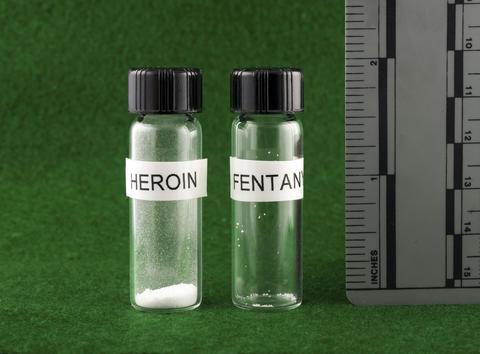
White Powder Heroin
Although white powder heroin is more refined than other forms, heroin sold on the streets is never pure heroin. Dealers typically mix the drug with cutting agents to stretch their supply and increase profit. Common cutting agents include lactose, quinine, talc, sugar, and caffeine. These additives can change what heroin looks like. They account for color variations ranging from white to beige to pink.
Because white powder heroin dissolves easily in water, most heroin users shoot the drug. Some people snort it. It’s not usually smoked as it burns much higher temperatures than other heroin forms. White powder heroin sometimes smells like vinegar and has a bitter taste. Fine white heroin powder can easily be mistaken for cocaine.
Brown Powder Heroin
Brown powder heroin is usually a more highly refined form of heroin than black tar. Because it can be smoked or snorted and doesn’t have to be injected with a needle, brown powder has gained popularity among suburban teens and others who might never have considered using heroin. Based on heroin-cutting agents, the brown powder can range from light beige to dirty brown. It usually has a strong vinegar smell, similar to black tar heroin, but the smell of heroin can differ dramatically based on its chemical components and purity.
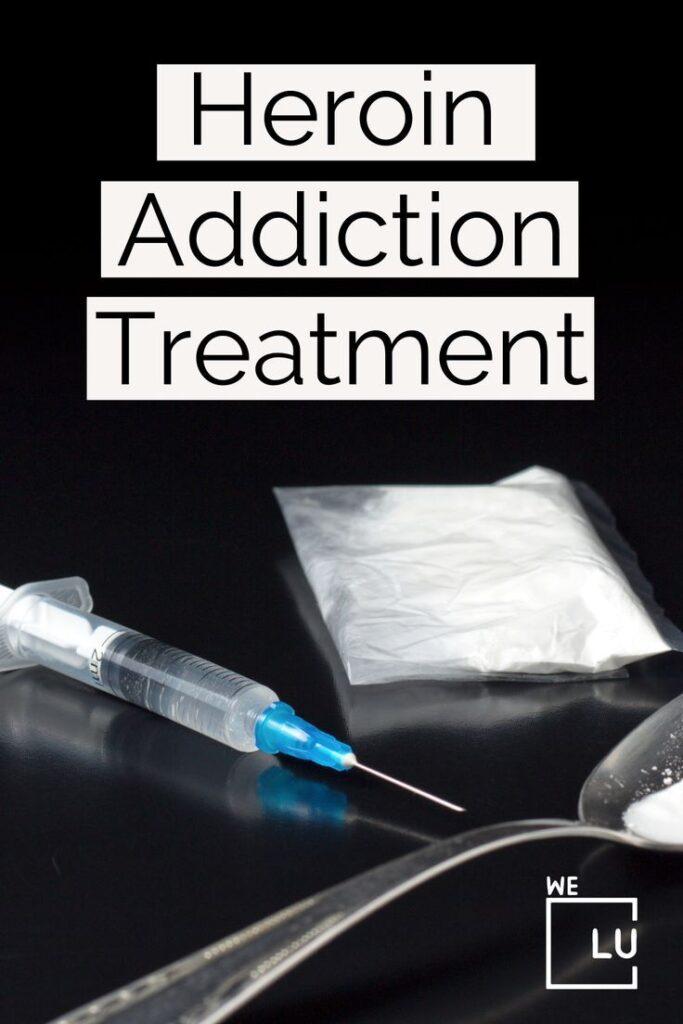
Skip To:
Learn More:
- Heroin Addiction Symptoms, Signs, & Side Effects
- What Does Heroin Smell Like?
- Heroin Detox Timeline, Withdrawal Symptoms, Care & Treatment
- Heroin Withdrawal Symptoms, Timeline, & Effective Detox
- How Long Does a Heroin High Last?
- What Does a Heroin High Feel Like? Effects, Overdose, Withdrawal, & Treatment
- Side Effects Of Heroin, Withdrawal Symptoms, & Treatment
- What Does a Heroin Addict Look Like?
- 6 Signs of a Functioning Heroin Addict
- Heroin Paraphernalia
What Does Black Tar Heroin Look Like?
Black tar heroin is an illicit drug made from morphine, a naturally occurring drug extracted from opium poppy plants. It is called black tar heroin because of its dark, sticky appearance, similar to roofing tar or molasses.
Black tar heroin is usually sold in small, sticky chunks or may be ground into a powder for smoking or injecting. It can range in color from dark brown to black and may have a sticky or tacky texture when heated.
Black tar heroin is highly habit-forming and can cause severe physical, mental, and emotional consequences, including overdose, respiratory failure, infections, and long-term mental health problems. Seeking professional treatment from a healthcare provider or addiction specialist is strongly recommended if you or someone you’re concerned with is struggling with heroin addiction.
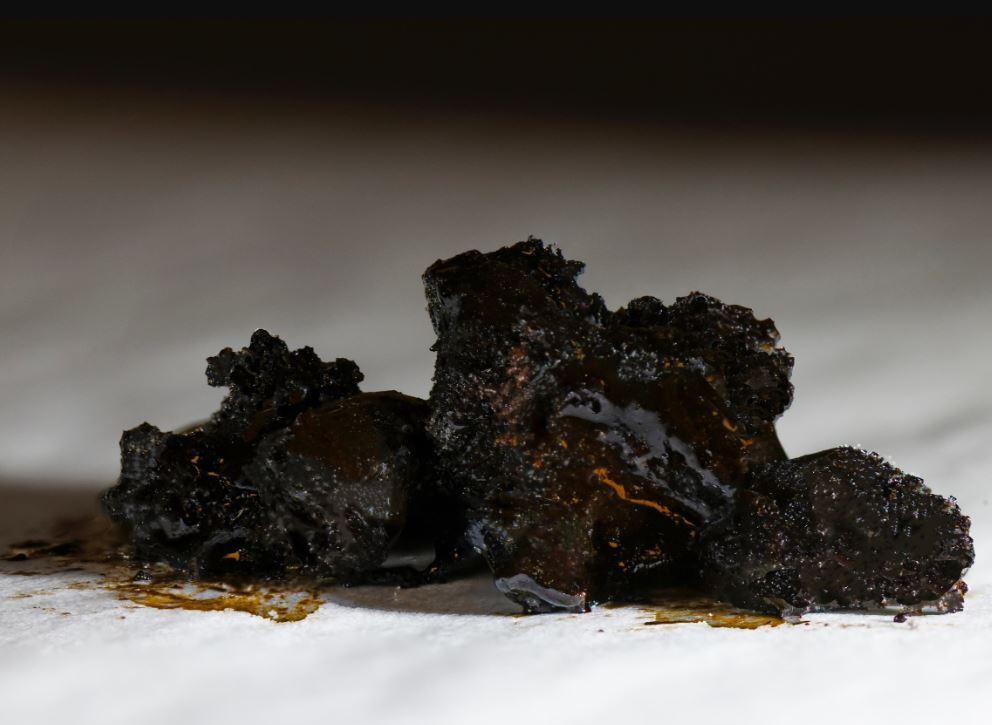
What Does Black Tar Heroin Smell Like?
Black tar heroin has a distinct, potent odor that can differ in intensity based on the method of ingestion. The smell of black tar heroin is often described as intense, pungent, and vinegar-like. It has a sweet and acidic smell, which some people describe as similar to the smell of vinegar or burnt rubber. The black tar heroin smell can vary based on the drug’s source and any contaminants or additives present. In general, any strange or unusual odors associated with black tar heroin use should be treated as a potential warning sign of drug use and addiction.
Black tar heroin effects can include euphoria, relaxation, and exhaustion. As with other forms of the drug, users can feel impaired, nauseous, and like they lack concentration and coordination. Other black tar heroin effects include itching, constipation, diarrhea, and dry mouth. One of the most destructive black tar heroin effects, aside from overdosing, is the risk of dependence.
Heroin Pills
Heroin pills, also known as “black tar pills,” are a form of heroin pressed into pill form. These pills are made by compressing powdered or granulated heroin with other additives to create a solid tablet. The appearance of heroin pills can vary, but they are typically small, round, or oval-shaped tablets with markings or imprints resembling pharmaceutical pills.
Heroin pills may contain varying amounts of heroin and other substances, making determining their purity and potency difficult. These pills pose significant health risks, as the exact composition and strength can be unpredictable. Ingesting heroin in pill form carries the same dangers as other routes of administration, including the risk of overdose and addiction.
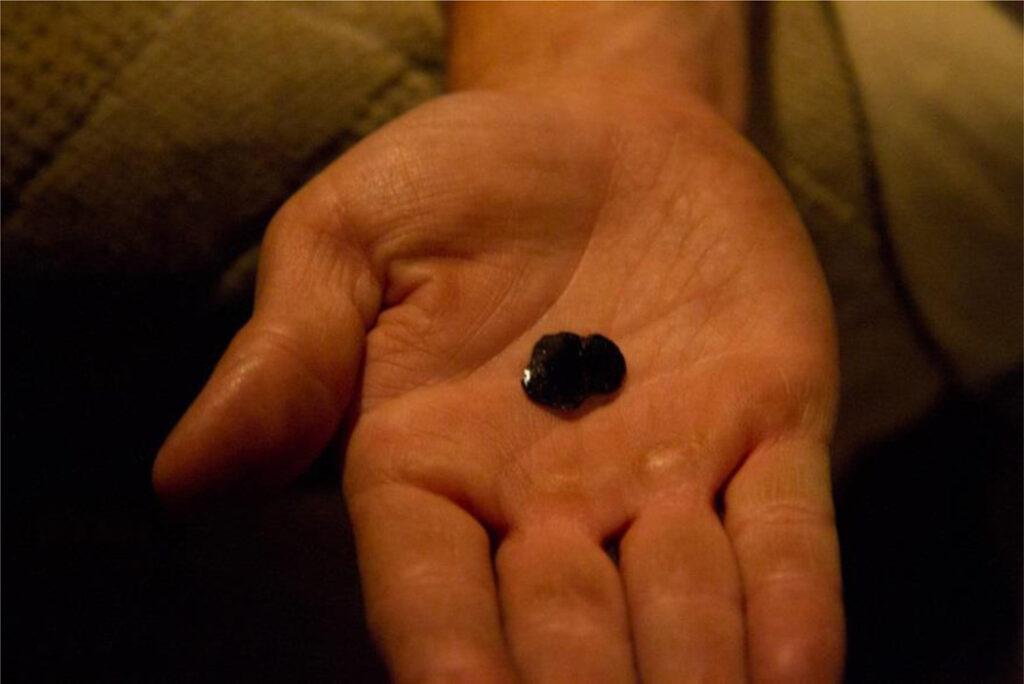
Synthetic Heroin
Synthetic heroin typically refers to synthetic opioids or opioid analogs chemically designed to mimic the effects of heroin. These synthetic opioids are created in laboratories and can have varying chemical structures and potencies. They are often produced to circumvent legal restrictions or provide a more consistent and potent product.
Some examples of synthetic opioids that may be referred to as synthetic heroin include fentanyl, carfentanil, acetyl fentanyl, and U-47700. These substances can be highly potent, often significantly stronger than heroin, and can increase the risk of overdose and death.

Heroin Drug Facts
Understanding Heroin Drug Addiction
Heroin addiction is a complex and chronic condition characterized by the compulsive use and seeking of heroin despite its harmful consequences. Individuals who become addicted to heroin often experience a range of physical, psychological, and social problems.
Heroin is an opioid drug that acts on the brain’s reward system, causing a surge of euphoria and relaxation. Over time, repeated heroin use can lead to tolerance, where higher heroin doses are needed to achieve the desired effects. This can then progress to dependence, where the body relies on heroin to function normally. Withdrawal symptoms can be severe when attempting to stop or reduce heroin use, which often contributes to the cycle of addiction.
It’s crucial for individuals struggling with heroin addiction to seek professional treatment and support to overcome this challenging condition and regain control of their lives.
Common Heroin Street Names
Heroin is known by various street names that refer to the drug in a clandestine or informal context. Some common street names for heroin include:
- Smack.
- H.
- Dope.
- Junk.
- Horse.
- Black tar.
- Brown sugar.
- China white.
- Boy.
- White girl.
These street names may vary regionally or change as new terms emerge. It’s crucial to recognize these names to understand better discussions or information related to heroin use and to promote awareness and prevention efforts.
What Does Heroin Taste Like?
Heroin is reported to have a bitter taste. Users often describe it as having a strong, chemical, or medicinal flavor. However, the taste of heroin is determined by different factors such as its purity, additives, and method of consumption.
Furthermore, personal perception of taste can differ from person to person. It’s essential to remember that discussing or seeking information about the taste of heroin should not be interpreted as promoting or endorsing drug use. Heroin use is illegal and carries significant health risks. If you or someone you’re concerned with is struggling with substance abuse, seeking help from a healthcare professional or a qualified addiction treatment center is crucial.
How Is Heroin Taken?
Heroin can be taken in various ways, including injection, smoking, and snorting. Each method of administration carries its own risks and health consequences, including the potential for overdose and transmission of diseases through shared needles.
Smoking Heroin
Smoking heroin involves heating the drug on a piece of aluminum foil or in a pipe until it vaporizes. The vapor is then inhaled into the lungs. A small amount of heroin is placed on the heated surface, and the user uses a straw, tube, or mouthpiece to inhale the resulting smoke. The smoke travels through the respiratory system, delivering the drug to the bloodstream and rapidly crossing the blood-brain barrier. Smoking heroin is associated with specific risks, including lung damage, respiratory problems, and the potential for overdose.
Snorting Heroin
Snorting heroin involves crushing the drug into a fine powder and inhaling it through the nose using a straw, rolled-up bill, or other devices. The powder is typically divided into lines or minor bumps and then snorted into the nostrils. Once inhaled, the heroin is absorbed through the nasal mucosa and enters the bloodstream. Snorting heroin can lead to nasal irritation, damage to the nasal passages, and an increased risk of infections.
Shooting Heroin
Shooting heroin, or intravenous or IV drug use, involves injecting the drug directly into a vein using a hypodermic needle and syringe. The heroin is typically dissolved in water and drawn into the syringe before being injected into a vein. This method delivers the drug rapidly into the bloodstream, producing an immediate and intense effect.
However, it also carries significant risks, including the potential for vein damage, infections, abscesses, and the transmission of blood-borne diseases like hepatitis and HIV. Additionally, injecting heroin increases the risk of overdose, as the full potency of the drug is delivered directly to the brain.
Heroin in Pill Form
Heroin in pill form, also known as “black tar pills,” is a relatively uncommon form of the drug. It involves pressing heroin into solid tablet-like forms that resemble pharmaceutical pills. These pills can vary in size, shape, and color and may have markings or imprints to mimic legitimate medications.
The composition of heroin pills can be unpredictable, as they may contain varying amounts of heroin and other substances or contaminants. Ingesting heroin in pill form poses similar risks as different routes of administration, including the potential for addiction, overdose, and other health complications.
Dangers of Heroin
All forms and methods of heroin use are hazardous and pose significant risks to individuals’ health and well-being. Whether heroin is injected, smoked, snorted, or taken in pill form, it carries severe potential consequences. Heroin use can lead to addiction, overdose, and various physical and mental health problems. The route of administration may influence the speed at which the drug enters the bloodstream and the intensity of its effects, but regardless of the method, the inherent risks remain.

Get Your Life Back
Find Hope & Recovery. Get Safe Comfortable Detox, Addiction Rehab & Dual Diagnosis High-Quality Care.
Hotline(844) 597-1011Statistics of Heroin Drug Use
Heroin remains a significant drug problem in the United States, contributing to the ongoing opioid crisis. The accessibility and affordability of heroin, along with the rise in prescription opioid misuse, have played a role in its widespread use and addiction. Efforts to address this crisis include:
- Prevention initiatives.
- Expanding substance use disorder treatment access and relapse prevention services.
- Increasing naloxone distribution to prevent fatal overdoses.
10.6 Million
An estimated 10.6 million people aged 15-64 used opioids, including heroin, globally in 2019.
Source: UNODC
745,000
In 2019, an estimated 745,000 Americans aged 12 or older had used heroin in the past year.
Source: NSDUH
50,000
In 2019, there were nearly 50,000 overdose deaths involving opioids in the US, with heroin significantly contributing to the opioid overdose crisis.
Source: CDC
What Does a Heroin Pipe Look Like?
Identifying heroin pipes can provide crucial clues in distinguishing heroin abuse. Heroin pipes can come in different forms. They are typically small handheld devices used for smoking or inhaling heroin. Glass pipes are often small and cylindrical, resembling a miniature version of a traditional tobacco pipe.
In some cases, individuals may convert light bulbs into makeshift heroin pipes. The glass part of the light bulb is typically modified by removing the filament and creating a small opening at the base for loading the heroin. Furthermore, metal or brass heroin pipes can resemble small, narrow tubes with a bowl or indentation at one end for holding the heroin. They are often discreet and portable.

Get Help. Get Better. Get Your Life Back.
Searching for Accredited Drug and Alcohol Rehab Centers Near You?
Even if you have failed previously and relapsed, or are in the middle of a difficult crisis, we stand ready to support you. Our trusted behavioral health specialists will not give up on you. When you feel ready or just want someone to speak to about therapy alternatives to change your life call us. Even if we cannot assist you, we will lead you to wherever you can get support. There is no obligation. Call our hotline today.
(844) 597-1011What Does Someone On Heroin Look Like?
Someone under the influence of heroin may exhibit specific physical and behavioral signs. Physically, they may have constricted or “pinpoint” pupils, limp or heavy eyelids, and flushed or pale skin. They may appear tired, with slowed movements and slurred speech. Common physical signs may include weight loss, pale or sallow complexion, track marks or scars from injection sites, and general neglect of personal hygiene.
They may also display poor coordination and nod off or fall asleep in unusual or inappropriate situations. Behavioral changes can include sudden mood swings, apathy, and social withdrawal.
Identifying Heroin Paraphernalia
Identifying heroin paraphernalia can help recognize potential heroin use. Here is some information on typical paraphernalia associated with heroin:
- Needles and syringes: Hypodermic needles are commonly used to inject heroin.
- Burnt spoons: Heroin is often dissolved and heated on a spoon before injection.
- Aluminum foil: Heroin can be heated on aluminum foil to create vapor for inhalation. Look for foil with burn marks, a sticky residue, or the presence of heroin powder.
- Rubber bands or tourniquets: These items create pressure and restrict blood flow for injecting heroin.
- Small baggies or folded paper corners: Heroin is commonly packaged in small plastic baggies or wrapped in folded paper corners for distribution and personal use.
- Pipes or straws: Some individuals may smoke or inhale heroin using makeshift pipes or straws.

Other signs and symptoms of someone on heroin may also include the following:
- Depression.
- Bloodshot eyes.
- Sudden weight loss.
- Secretive behavior.
- Paranoia.
- Changes in appearance.
- Lack of motivation.
- Extreme drowsiness or nodding off.
- Slurred speech.
- Shortness of breath.
- Constipation.
- Collapsed veins.
- Severe itchiness.
- Nausea.
- Vomiting.
The presence of these heroin paraphernalia items alone does not definitively confirm heroin use, as some paraphernalia can be used for other purposes. If you suspect someone is using heroin or any other illicit substance, it’s recommended to seek professional help and support.
First-class Facilities & Amenities
World-class High-Quality Addiction & Mental Health Rehabilitation Treatment
Rehab Centers TourRenowned Addiction Centers. Serene Private Facilities. Inpatient rehab programs vary.
Addiction Helpline(844) 597-1011Proven recovery success experience, backed by a Team w/ History of:
15+
Years of Unified Experience
100s
5-Star Reviews Across Our Centers
10K
Recovery Success Stories Across Our Network
- Low Patient to Therapist Ratio
- Onsite Medical Detox Center
- Comprehensive Dual-Diagnosis Treatment
- Complimentary Family & Alumni Programs
- Coaching, Recovery & Personal Development Events
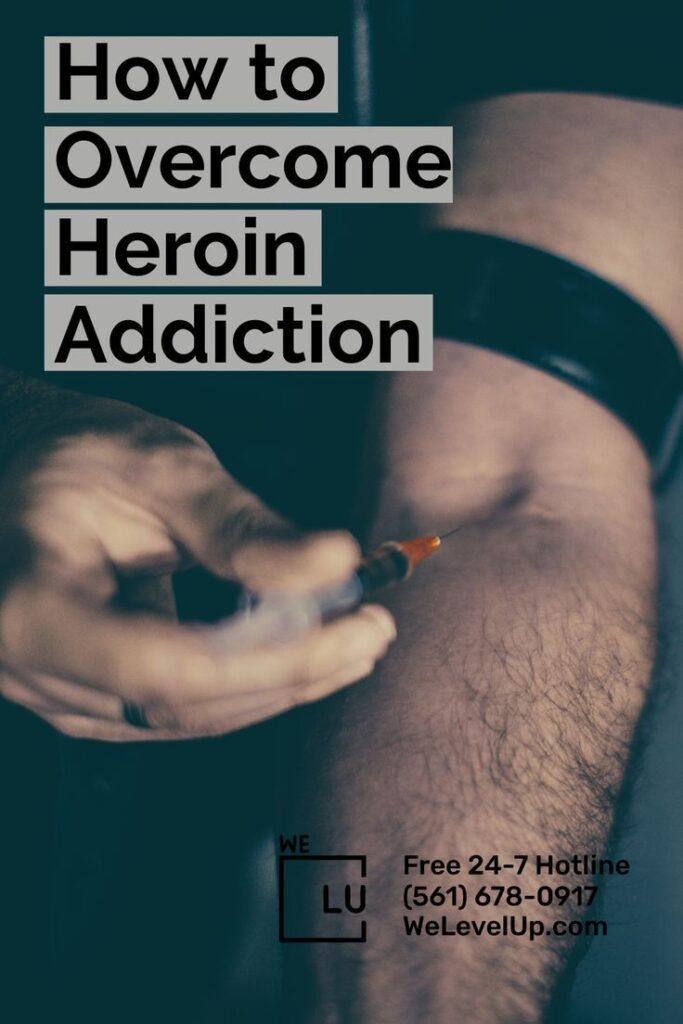
What Does a Heroin Overdose Look Like?
Heroin addiction overdose can lead to life-threatening symptoms. Immediate medical assistance is crucial in cases of suspected heroin overdose. A heroin overdose can have various signs and symptoms, but some common indicators include the following:
- Depressed or slowed breathing: Shallow or difficult breathing, or even a complete cessation of breathing, is a significant sign of a heroin overdose. Breathing may become slow and irregular, or the person may struggle to breathe.
- Extreme drowsiness or unconsciousness: A person experiencing a heroin overdose may appear extremely drowsy or nod off and may be challenged to wake up or be unresponsive altogether.
- Blue lips and nails: Cyanosis, a bluish tint to the lips, fingertips, or nails, may occur due to inadequate oxygenation.
- Pinpoint pupils: Heroin can cause pupils to constrict significantly, resulting in “pinpoint” or tiny pupils, even in dim lighting.
If you suspect someone may be experiencing a heroin overdose, it is crucial to seek immediate medical help by calling emergency services. Timely administration of the opioid overdose-reversing medication naloxone can be life-saving.
Heroin Addiction Treatment
Heroin addiction treatment typically involves a blend of approaches to address the addiction’s physical, psychological, and social aspects. Detoxification, usually the first step, helps manage withdrawal symptoms in a supervised setting. Medications such as methadone, buprenorphine, or naltrexone may be prescribed to reduce cravings and stabilize the individual.
Behavioral therapies, such as cognitive-behavioral therapy (CBT) and contingency management, help individuals develop coping skills, address underlying issues, and modify addictive behaviors. Support groups and counseling provide ongoing support and relapse prevention strategies. Long-term aftercare, including therapy and support, is essential to sustain recovery and prevent relapse.
If you or someone you’re concerned with is struggling with heroin addiction, it is crucial to seek professional help from a reputable rehab center specializing in substance abuse treatment. Professional rehab centers provide comprehensive and individualized care to address the specific needs of each person seeking treatment. They offer a range of evidence-based interventions and complete levels of care, from medical detox to aftercare programs.
Contact We Level Up drug rehab center for treatment resources and options. We offer free consultation, assessment, and checking of insurance coverage for the treatment program. Today you can reclaim your life from heroin addiction by reaching out for support.
World-class, Accredited, 5-Star Reviewed, Effective Addiction & Mental Health Programs. Complete Behavioral Health Inpatient Rehab, Detox plus Co-occuring Disorders Therapy.
CALL(844) 597-1011End the Addiction Pain. End the Emotional Rollercoaster. Get Your Life Back. Start Drug, Alcohol & Dual Diagnosis Mental Health Treatment Now. Get Free No-obligation Guidance by Substance Abuse Specialists Who Understand Addiction & Mental Health Recovery & Know How to Help.
Top 3 What Does Heroin Look Like? FAQs
-
What does heroine look like?
Often misspelled as “heroine,” heroin, the correct spelling, has many forms. Heroin can have different appearances based on its condition and purity. It can be found as a white or off-white powder that resembles powdered sugar or flour. Alternatively, it may be in the form of a brown or tan powder. Another variation is black tar heroin, a sticky, dark substance resembling roofing tar or thick molasses.
-
What does a gram of heroin look like?
What does heroin look like? A gram of heroin typically appears as a small, compacted powder or a solid chunk. The color can vary, ranging from white or off-white to brown or tan. The consistency may be fine and powdery or slightly clumpy, based on its level of refinement and any added cutting agents. The appearance of a gram of heroin can vary due to its quality, additives, and regional differences in manufacturing and packaging practices.
-
What does a heroin addict look like?
The physical appearance of a heroin addict can vary significantly and is determined by factors such as the severity of their addiction, overall health, and personal circumstances. Common signs may include weight loss, pale or sallow complexion, dilated pupils, track marks (from injection sites), and overall neglect of personal hygiene.
Furthermore, individuals struggling with heroin addiction may exhibit erratic behavior, mood swings, social isolation, financial difficulties, and a decline in personal and professional responsibilities.
Addiction Recovery Story of Alcoholism, Crack Cocaine Addiction, & Heroin Addiction To Sobriety & AA
Heroin addiction often develops due to a progression from using other substances, such as prescription opioids, alcohol, or other illicit drugs. For example, the misuse of prescription pain medications can lead some individuals to heroin use, as both substances belong to the opioid class and produce similar effects.
It is crucial to comprehend that addiction is a complex disease that affects individuals differently, and there is no one-size-fits-all explanation for its development. Treatment for heroin addiction often requires comprehensive approaches that address the individual’s unique needs, including detoxification, therapy, support groups, and ongoing aftercare to support long-term recovery.
Get FREE addiction treatment insurance check – https://welevelup.com/rehab-insurance/
If you or a loved one is struggling with heroin addiction or other substance use disorder(s), call a FREE consultation 24/7 at (561) 678-0917
Lorraine’s Addiction Recovery Testimonial Video Transcript.
“If I didn’t change, I would return to jail. I’m Lorraine, and I’ve been sober for six years. I’m a recovering alcoholic, heroin addict, and crack cocaine addict.
I was homeless for several years. I called the one person that never gave up on me, and that was my mom, and within an hour, she was at the motel where I was staying. And I said yes because I didn’t know what I was doing with my life, and it was the best phone call I had ever made.
After getting out of treatment, I did everything they told me to do. I got a sponsor. She’s still my sponsor. She’s taken me through the steps several times. I went back to school, and now I’m one semester away from finishing my Bachelor’s in social work. And then, I will start my Master’s in hopes to be a therapist so I can be there for others.
Being sober is the only reason that I can work towards that.”
Experience Transformative Recovery at We Level Up Treatment Centers.
See our authentic success stories. Get inspired. Get the help you deserve.
Start a New Life
Begin with a free call to an addiction & behavioral health treatment advisor. Learn more about our dual-diagnosis programs. The We Level Up Treatment Center Network delivers recovery programs that vary by each treatment facility. Call to learn more.
- Personalized Care
- Caring Accountable Staff
- World-class Amenities
- Licensed & Accredited
- Renowned w/ 100s 5-Star Reviews
We’ll Call You
Search We Level Up What Does Heroin Look Like? Drug Detox Topics & Resources
Sources:
[1] Chasing the Black Dragon – Office of Justice Programs (OJP) Learn More About “What Does Heroin Look Like?”
[2] What does heroin look like? & Heroin effects. Passaro DJ, Werner SB, McGee J, Mac Kenzie WR, Vugia DJ. Wound botulism associated with black tar heroin among injecting drug users. JAMA. 1998 Mar 18;279(11):859-63. DOI: 10.1001/jama.279.11.859. PMID: 9516001.
[3] What does heroin look like? & Heroin effects. Wound Botulism Outbreak Among Persons Who Use Black Tar Heroin — San Diego County, California, 2017–2018 – Centers for Disease Control and Prevention (CDC)
[4] Learn More About “What Does Heroin Look Like?” Ciccarone D. Heroin in brown, black and white: structural factors and medical consequences in the US heroin market. Int J Drug Policy. 2009 May;20(3):277-82. DOI: 10.1016/j.drugpo.2008.08.003. Epub 2008 Oct 21. PMID: 18945606; PMCID: PMC2704563.
[5] Mars SG, Bourgois P, Karandinos G, Montero F, Ciccarone D. The Textures of Heroin: User Perspectives on “Black Tar” and Powder Heroin in Two U.S. Cities. J Psychoactive Drugs. 2016 Sep-Oct;48(4):270-8. DOI 10.1080/02791072.2016.1207826. Epub 2016 Jul 20. PMID: 27440088; PMCID: PMC5027195. Learn More About “What Does Heroin Look Like?”
[6] Learn More About “What Does Heroin Look Like?” – National Institute on Drug Abuse (NIDA) Available from: https://nida.nih.gov/research-topics/heroin
[7] Heroin Fast Facts – Department of Justice (USDOJ) Available from: https://www.justice.gov/archive/ndic/pubs3/3843/index.htm Learn More About “What Does Heroin Look Like?”
[8] MedlinePlus Heroin Drug Information: https://medlineplus.gov/heroin.html Learn More About “What Does Heroin Look Like?”
[9] What does heroin look like? & Heroin effects. Davis CS, Carr DH, Samuels EA. Paraphernalia Laws, Criminalizing Possession and Distribution of Items Used to Consume Illicit Drugs and Injection-Related Harm. Am J Public Health. 2019 Nov;109(11):1564-1567. DOI: 10.2105/AJPH.2019.305268. Epub 2019 Sep 19. PMID: 31536408; PMCID: PMC6775926.
[10] Oelhaf RC, Azadfard M. Heroin Toxicity. [Updated 2023 May 8]. In: StatPearls [Internet]. Treasure Island (FL): StatPearls Publishing; 2023 Jan-. Available from: https://www.ncbi.nlm.nih.gov/books/NBK430736/ Learn More About “What Does Heroin Look Like?”


